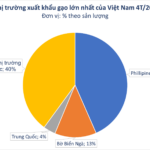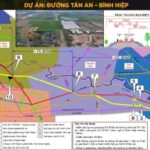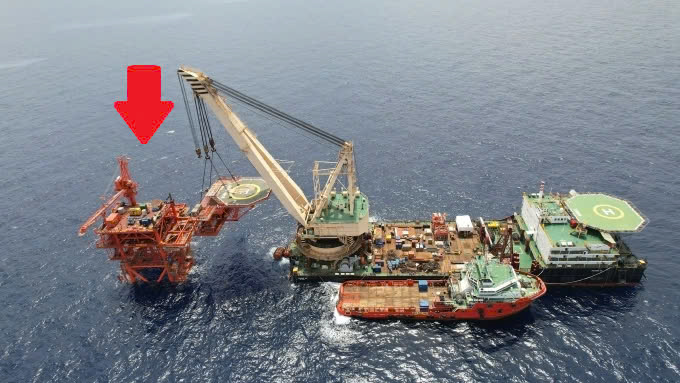
The grand opening of the Dai Hung Oil Field Phase 3 project. Photo: Petrovietnam
This hidden treasure is the Dai Hung Oil Field.
On the evening of May 16, the National Oil and Gas Exploration and Production Company (PVEP) held a ceremony to welcome the first stream of oil from the Dai Hung Oil Field Phase 3 development project, located about 256 km off the coast of Vung Tau.
Attending the ceremony, Deputy Prime Minister and Minister of Foreign Affairs Bui Thanh Son highly appreciated the commencement of commercial oil production from the project, which was achieved 20 days ahead of schedule. This is considered a remarkable achievement in the context of the country’s economic development and energy security efforts, as well as the transition to a sustainable energy future. The project was carried out entirely by domestic units, demonstrating the capability and initiative of PVEP, Petrovietnam, and their partners.
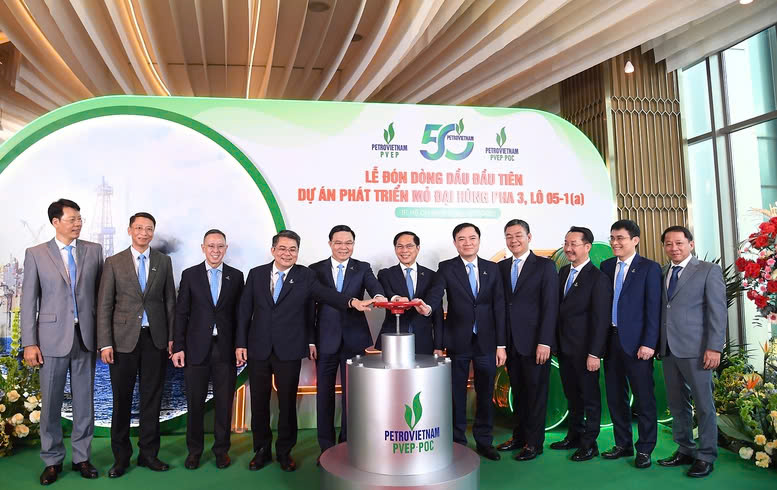
Deputy Prime Minister Bui Thanh Son attends the ceremony to welcome the first stream of oil from the Dai Hung Oil Field Phase 3 project. Photo: VGP
According to the Deputy Prime Minister, the early commencement of commercial oil production from Phase 3 of the Dai Hung Oil Field, 20 days ahead of schedule, is a positive development in the context of the country’s economic growth target of 8% for 2025 and aspirations for double-digit growth in the following years. This contributes to the nation’s goal of becoming a high-income developed country by 2045, on the centenary of its founding.
On the first day of operation, the wells in Phase 3 produced a flow rate of 6,000 barrels of oil per day and are expected to reach 8,000 barrels per day within a few weeks, achieving 18,000 barrels/day by the end of 2025.
With this production rate, Phase 3 of the Dai Hung Oil Field is expected to contribute an additional $2.5 billion in annual revenue for the enterprise and about $450 million to the state budget.
Reviving a $1 Project
The Dai Hung Oil Field is located in the Nam Con Son Basin and was identified by ExxonMobil (USA) before 1975. The field’s oil and gas reserves were evaluated based on the exploration drilling results of Vietsovpetro during the period from 1986 to 1990. In 1993, an international contractor consortium led by BHP Billiton (Australia) was assigned to manage the exploration, appraisal, and early development of the Dai Hung Oil Field.
However, the actual management and operation of the field faced numerous challenges. As a result, foreign investors such as BHP and Petronas (Malaysia) withdrew from the project, leaving all the invested exploration and production equipment to Petrovietnam for a price of $1.
After transferring the project to Vietsovpetro for management and facing the decision of partner Zarubezhneft (Russia) to withdraw, the Petrovietnam Corporation decided to hand over the management of the Dai Hung Oil Field development project to the National Oil and Gas Exploration and Production Company (PVEP) from October 2003.
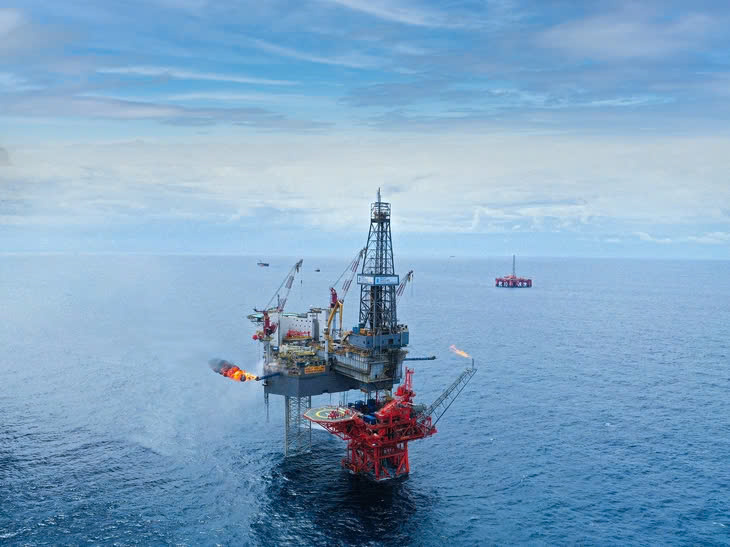
Dai Hung Oil Field Phase 3 project. Photo: PS
With a total investment of over $400 million, the Dai Hung Oil Field Phase 3 Lot 05-1(a) includes several large-scale technical items such as the WHP-DH01 wellhead platform located at a depth of more than 110m, a 5.2km flexible pipeline connecting to the existing central processing platform (FPU), etc. Notably, all design, manufacturing, construction, and installation work was carried out by Vietnamese engineers and workers. This is also a rare feat in previous deepwater projects.
As of April 2025, after 30 years of operation (since 2005), the Dai Hung Oil Field has produced 75 million barrels of oil. By the end of 2024, the field had generated over $4 billion in revenue and contributed more than $600 million to the state budget. With the commencement of Phase 3, the total revenue from the entire field is expected to reach approximately VND 160,000 billion (equivalent to $6.4 billion) by 2034, adding approximately 76 million barrels of oil to Petrovietnam’s total production.
Mr. Le Manh Hung, Chairman of the Members’ Council of Petrovietnam, shared that there was a time when the project faced the risk of closure in 2020 due to a sharp drop in oil prices, while the production cost was as high as $57 per barrel. However, with determination and resilience, Petrovietnam transformed the project from a $1 value to a project worth over $4 billion.
At the same time, the corporation is implementing the Dai Hung Nam project, expected to be operational by the end of 2026. By then, the total production of the entire field is projected to reach nearly 30,000 barrels of oil per day, striving to be among the top three oil fields in Vietnam.
The Dai Hung Oil Field Phase 3 marks the first time that a project with the most complex geological, flow, and depth conditions has been carried out entirely by Vietnamese personnel. The successful commencement of oil production at a rate of 6,000 barrels/day, 20 days ahead of schedule, is not only a technical achievement but also a significant milestone affirming the autonomy of Vietnamese engineers and workers in the oil and gas industry in terms of EPC (engineering, procurement, and construction) capabilities.
The Dai Hung Oil Field Phase 3 project was implemented amid a volatile international market, supply chain crises, soaring material prices, and the complex geological and hydrographic conditions of the deepwater area, which posed significant technical challenges. Nonetheless, this deepwater project, located at a depth of over 110m, was successfully studied and operated by an entirely Vietnamese team of managers, engineers, and experts.
The World’s Second-Largest Economy Hunts for a Surprising Commodity from Vietnam: A Surprising Surge in Exports and 20 Million Tons of Annual Production
Vietnam is one of the top three exporters in the world, a powerhouse in the global market with an incredible capacity to produce and ship goods internationally. With a diverse range of products, from electronics to agricultural produce, Vietnam has firmly established itself as a key player in the realm of international trade. The country’s economic prowess and ability to cater to the demands of a global market are truly remarkable.
The Capital’s 20,000-Billion-Dong Cable-Stayed Bridge Project Takes Flight: A Soaring Dragon Symbolizing Hanoi’s Ambition
“Introducing Hanoi’s newest landmark – the city’s second cable-stayed bridge. This stunning structure, with its sleek design and modern engineering, is a testament to the progress and development of Vietnam’s capital. Like a graceful dancer, it spans the waters, connecting the shores with elegance and strength. A true marvel to behold, it captivates all who witness its majestic presence.”


